Guest blog by Spencer Haws from Niche Pursuits.
8 Steps to Building a Site That Makes Over $1,000 a Month
Over the course of the last several months, I have been able to build a brand new site from scratch that is now making over $1,000 a month.
In fact, just last month it made $1,218. Now, for some of you that may not be much money. For others, that’s a pretty sweet side income that could help pay the mortgage.
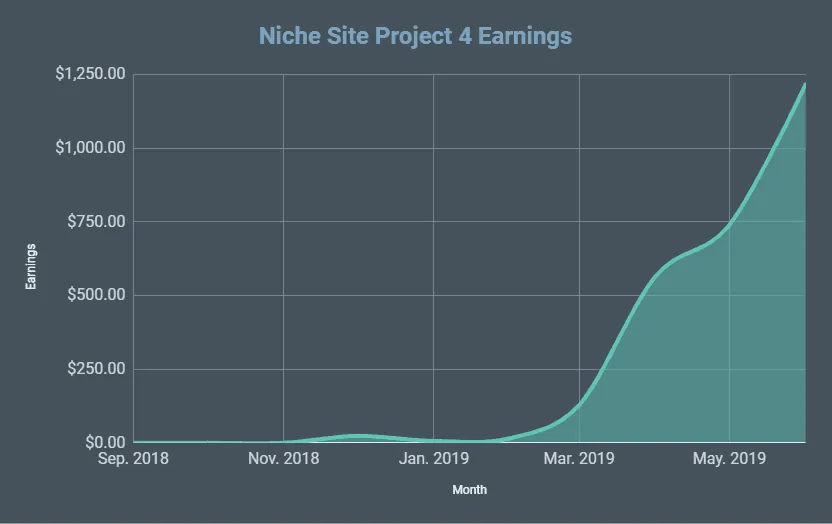
Either way, the most exciting thing is that the site I built is growing rapidly, and I expect the income to continue to increase over time as I continue to grow the site.
Today, I want to outline the 11 steps I followed to build a site from scratch that now ranks in Google for well over 10,000 keywords and is poised to continue growing.
1. Finding a niche for your website
A “niche” is where you will focus the content of your site. Some sites actually never pick a niche, they just become general sites that blog about whatever they want, whenever they want. This is not a good strategy.
It’s important to find a focus so that you can know who your audience is and what makes them tick.
I’ve narrowed down my strategy for picking a niche to these 4 bullet points:
- Find a niche where there are low authority sites already ranking.
- Find an area that has lots of topics that you could write content on that combined have lots of traffic (you don’t need to find high traffic keywords per se).
- Make sure there are profitable products already being sold.
- Bonus: If you are interested or passionate about the niche that’s ideal, but not required.
I’ll talk a bit more about finding low authority sites and finding lots of topics in the keyword research step.
One of the most essential parts of picking a niche for me is making sure that there are products being sold in that niche. My strategy has always been to focus on affiliate and display revenue so finding the right fit for this model is important. There’s nowhere easier to check on this than at Amazon.
Let’s say you’re going into the furniture niche. Hop on Amazon and search for an item that you think you could sell. I found a couch that looks promising. You can scroll down, find the Best Seller Rank, and put that rank into Jungle Scout’s free sales estimator.
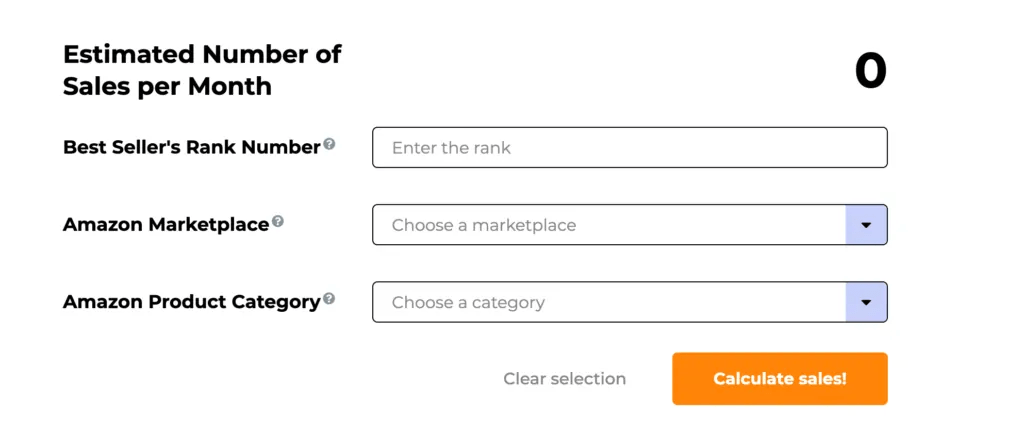
The couch I found gets a whopping 2,790 sales per month on a product that costs $200. That means that there is a ton of potential in this niche for products being sold.
This is the exact process I used to start my website in the lawn niche.
Now let’s talk about how I located my target keywords, found low authority websites, and found my site’s topics. Don’t worry, these are all just one step!
2. Approaching keyword research with an objective in mind
Your keyword research might just be the most important part of this process for me. Good keyword research can save you hundreds if not thousands of hours. Bad keyword research can leave you spinning your wheels for ages without getting anywhere.
The objective here is to find low competition keywords that you can write about and rank for without much trouble. To do this, you’ll need some sort of keyword research tool to give you ideas for keywords. You’ll also want to be able to look at the search engine results page (SERPs) and tell how authoritative each competitor is.
I use Long Tail Pro to do my keyword research (but full disclosure, I made it). I like to take a seed keyword like “couches” and add modifiers that buyers would look for: best couches, couch reviews, etc. Long Tail Pro takes these modified keywords and gives back some keyword ideas:

“Best affordable sofa”, “best sleeper sofa”, “best comfortable couches”, and more. You can use the keyword difficulty score as a rough gauge of how hard it is to rank for that keyword. But I like to take a more personal approach.
If you go into the SERP analysis, you can check on the domain rating of each website at the top of the search results. If I can find at least 2 websites on the first page of Google with less than 30 domain ratings, that’s a good keyword. I like to find at least 10 of these keywords for any new site I’m starting, but more is better.
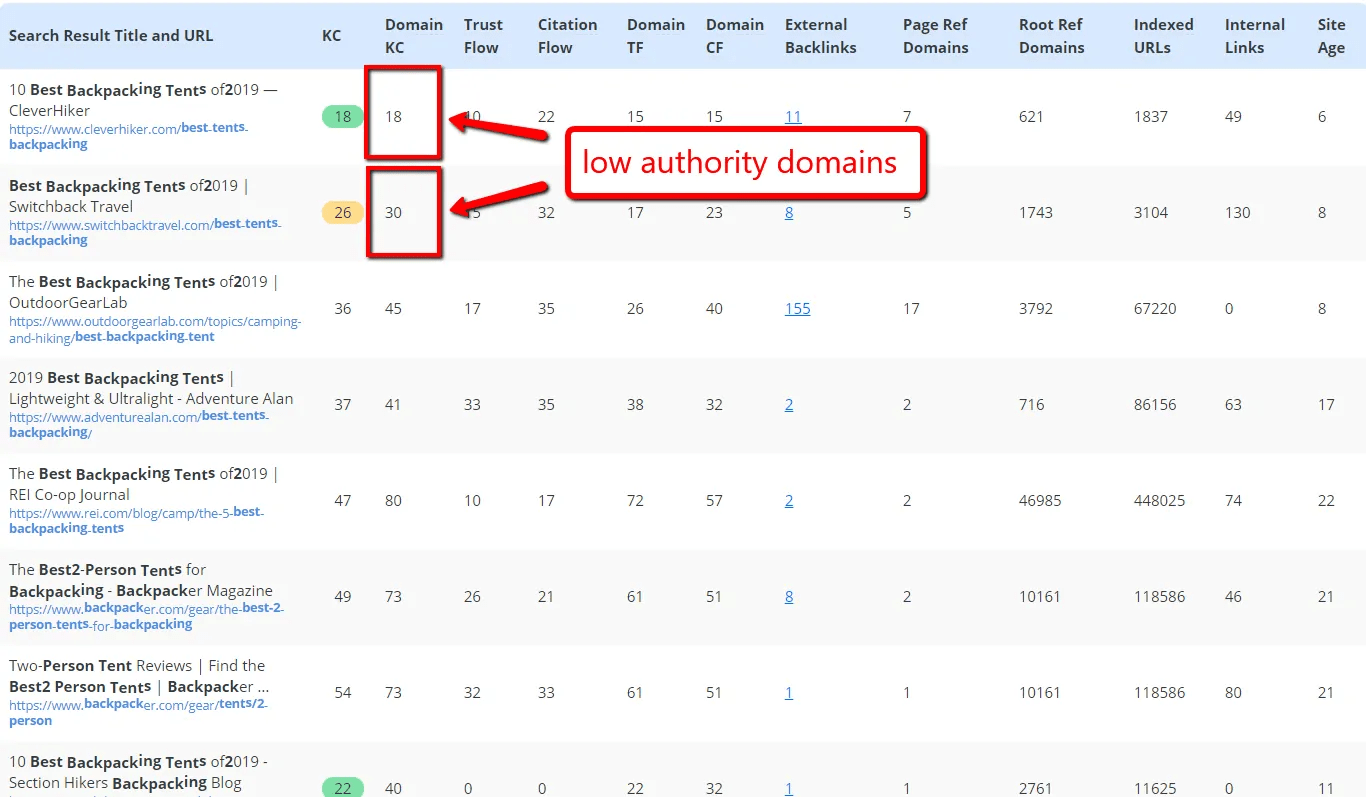
Types of Content
As you start finding your keywords for your niche, you’ll notice that some of these topics are similar. They aren’t the same keyword, but they can be categorized together.
On a website about home furniture, you may find a lot of keywords about couches, a lot of keywords about coffee tables, and a lot of keywords about TV stands.
These are going to be your grouped topics. In WordPress, they’re called categories. I suggest starting with just a few of these (3 is fine) and then as you grow your site, add more. Ezoic has some great features for evaluating how categories on your site perform in terms of revenue inside Big Data Analytics.

Content depth
You want to make sure that your content has a lot of value in it. Sometimes this means that you will need a higher word count than your competitors, but not always.
I never try to just stick a lot of words on a page. Instead, I ask myself “Will someone have to go to another website after reading my article? Are there any questions or problems a reader may have that I’m not answering?”
Having in-depth content is important because it shows Google that you’re an authority in your niche. You know what you’re talking about. In-depth content also has the added benefit of making sure that your readers love your site.
3. Scaling your efforts by hiring writers
This step isn’t necessary, but I did it on my site that made $1,218 last month. You can write all the content yourself, but it will take you a little bit longer.
While hiring my writers, I don’t skip out on quality. Even if I have to pay a bit more, good content is the most important thing. That being said, I’ve found that a few types of writers often produce high-quality content for less money.
I’ve had good luck with college students and stay-at-home moms. I find them on Upwork, but I have found some workers on Facebook before. I’ve also used the agency ContentPit to deliver some great content for less than I could get it elsewhere.
4. Ranking in Google is always my goal
From day one, the site was designed with organic search traffic from Google in mind. And I feel pretty confident in saying that I think my strategy worked out alright. Here’s a graph of the organic traffic growth:

I designed my site from day 1 with Google in mind. To get free traffic from Google, I targeted a very specific type of keyword: the long tails.
A long-tail keyword is a keyword 3 or more words long that gets low search volume. So while “cell phone” may not be a long-tail keyword, the “best cell phone for travel” is a very long tail.
And this is where a lot of website owners go wrong. They target short tail, high volume keywords. Long-tail keywords often have very little traffic, but they almost always have less competition than their short-tailed friends. Instead of publishing 15 articles that drew in 1,000 visitors per month, I published 150 articles that drew in 100 visitors per month. Not only did my traffic come for free, but this established my authority in the niche and helped me win some backlinks.
This type of long-tail traffic doesn’t sound as attractive as the big keywords. But it is the golden key to solving your traffic problems.
5. Pinterest is an underrated traffic source you can use
In addition to Google traffic, I wanted to get traffic that wasn’t dependent on search engines. Facebook has been a challenge for me recently and has not been a point of focus.
I think that the easiest and best social media channel right now is Pinterest. For every post I made, I had a virtual assistant create two pins on Pinterest with links to the post. This generated my main source of traffic for the first few months but has been eclipsed by Google since then.
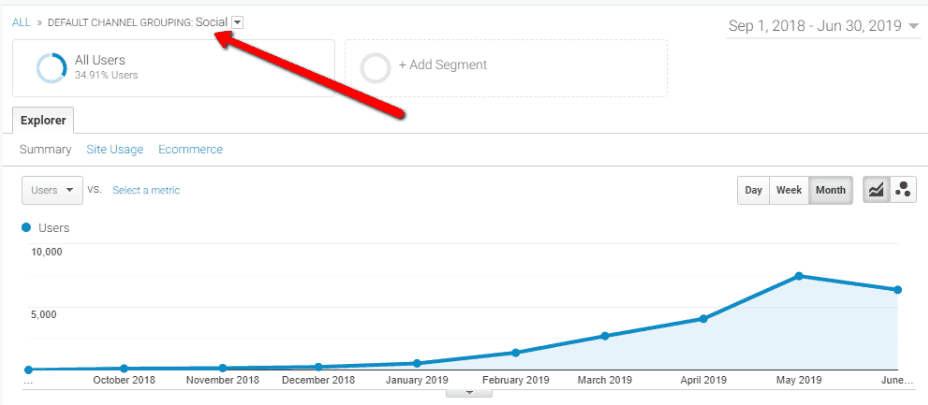
June was the first month so far where Pinterest traffic wasn’t at an all-time high, but I think that’s due to seasonal changes. I’m not too concerned about it.
6. Internal linking structure plays a big role
I think topical authority is more important than ever and it will continue to be more important as time goes on. One day, as Google gets better at judging authority on its own, topical authority, may even eclipse backlinks (but that’s just my personal speculation).
To show Google that I knew what I was talking about in my site, I created large “pillar” articles. These are also known as skyscraper articles. These articles have a monster word count (some as high as 11k+). These articles are in-depth, well thought out, and cover a lot of ground.
You can imagine that these articles get a few links on their own and are pretty strong from Google’s point of view. I use these articles as a sort of springboard for my more commercial, income-generating content.
Internal links pass PageRank from one page to another. PageRank is Google’s metric that judges how “authoritative” a site is. There’s a high correlation between PageRank and high rankings.
I used my own tool (Link Whisper) to build easy and relevant internal links from my “authority” pillar pages to my income-generating pages. This passed PageRank, passed authority, and helped my income-generating pages rank.
7. Monetizing the sites with affiliate and display revenue
Now comes the fun stuff…how to actually make money from the new niche website. In my particular case, I used Amazon Associates and Ezoic as primary monetization mechanisms for my site.
Amazon Associates Program
I built the site intending to monetize it with Amazon Associates. Many of my articles follow a “buying guide” type of structure:
I will get my writers to review five or so products based on product descriptions and reviews on Amazon. After the reviews, the articles explain to readers what the reader should look for before buying.
After that, my writers answer frequently asked questions, give brief descriptions of the best brands available, and add a conclusion. I always ask my writers to provide a final call to action in the conclusion.
Ezoic’s self-serve platform for managing display ads
Another piece of the puzzle that’s critical to my site’s success is that I’ve had Ezoic as a tool to implement, optimize, and manage my display ads.
I’ve always run some sort of ads on my sites. When I quit my job in 2011 to do the “website thing” full time, I was monetizing tons of small niche sites with Google Adsense.
I’ve used Adsense, Mediavine, and AdThrive to monetize my sites. In theory, all the solutions that you here bloggers and independent site owners talk about.
But, Ezoic outperformed them and allows me to manage it all myself (as hands-on or hands-off as needed/desired).
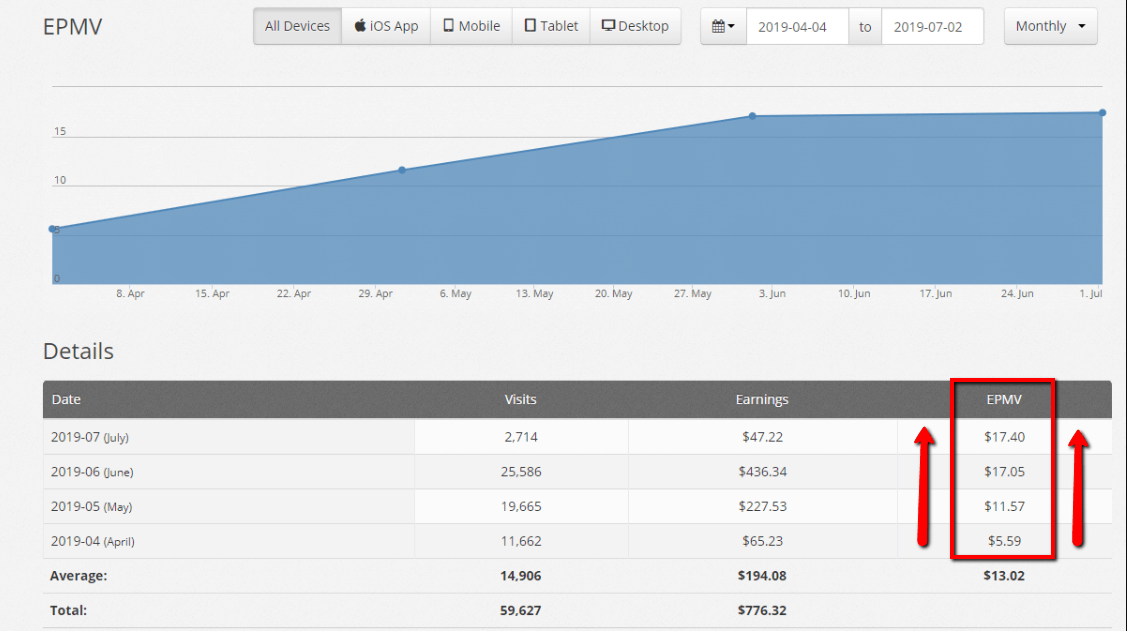
The site still isn’t getting monster amounts of traffic, so the total earnings aren’t that impressive yet. What is impressive is earnings per thousand visitors (EPMV).
Last month, Ezoic got my site up to a monster $17.40 per thousand visitors. To give you a comparison, I used to be happy to get just a couple of dollars per thousand with Adsense.
8.Building links in an ethical and effective manner
While I think that link building may be less important in the future, it’s still one of the top-ranking factors today (alongside content).
I used a few link building strategies that had a cumulative effect. I hired a virtual assistant to write about 100 blog comments with links pointing to my site. I made sure that these weren’t spammy. I don’t wanna be that guy
But I don’t feel like these comments had a lot of effect on my overall SEO efforts. I build some guest post links and then used The HOTH and Authority Builders to provide my site with more white-hat links [note link building services are against Google’s webmaster policy].
I’m sure that these links helped my site, but many posts that don’t have any backlinks are ranking high for their keyword. I think that this speaks to the power of internal linking as much as anything, but I don’t want to dismiss the power of link building.
It is worth saying that since I started making more than a few hundred dollars per month, I’ve stopped all link building. Traffic and income are still growing, so I’m not planning much more active link building for now.
So, how do you build a site that makes more than $1000 a month?
Here is a quick summary of the things you will need in order to build a website making $1000+ per month:
- Keyword research
- Content in distinct categories
- In-depth content
- Time spent writing (or hiring writers)
- Optimization for Google or your preferred traffic source
- Internal linking
- Monetization: Amazon Associates, Ezoic, etc
- Link building
It’s a lot easier said than done. But once these types of niche sites are made, they can be very lucrative (and can be pretty passive). This type of thing can change your life as I did mine 8 years ago.


This is great, but a first time attempt at replicating this should be cautioned with a caveat; “simple” does not mean “easy”.
I would say that picking a niche (keywords) and creating compelling content are the most difficult tasks here. Picking the right niche could turn into a shot in the dark. And writing 150 articles could cost thousands of dollars. Unless you can churn out 3000 words every day, for months, without getting paid, in a niche you are not passionate about.
With that being said, I still believe that a website that’s making even a couple thousand dollars every month in a small niche is one of the best assets someone could own!
This is a well written and detailed article. Getting good low competition keywords with high monthly searches volumes is very important.
Appreciate the insights, Spencer, and the care in sharing them. Have a related question if I may. I run a niche site, pretty much a one-state Drudge Report, up to 500K page views a year, all organic. . AdSense, Amazon Affiliates, etc., won’t partner because it’s an aggregator. Any thoughts on Blue Chip ad partners that would work better and not ding me for being an aggregator?
Great post. I would also consider investing on buying a good old domain in your niche. That way you can rank faster without worrying too much about links.
Thanks for a detailed process to start a niche site. Would appreciate if you could recommend some of the best content writers in upwork/fiverr for affiliate articles.
I have not heard many publishers having good luck on those sites hiring writers.
What sites do you recommend for finding good writers? I’ve also not had good luck with writers from Upwork.
How much are you willing to pay the writers though? “Pay peanuts, get monkeys”.